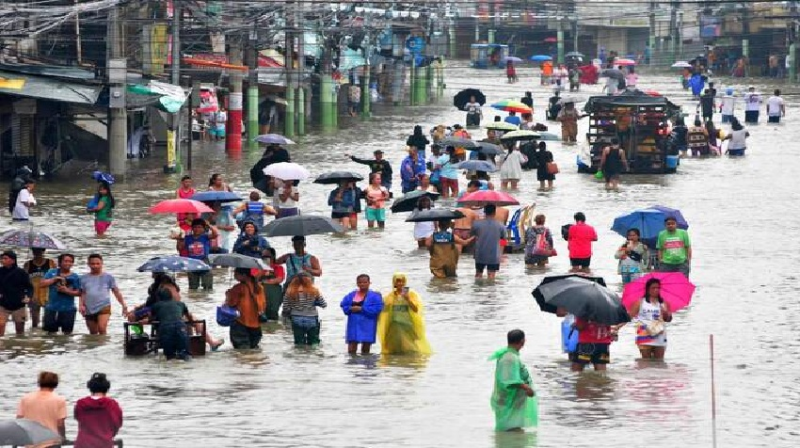- Security Council Divided on United States' Venezuela Action |
- Over 1.53m voters register for postal balloting: Shafiqul Alam |
- Bangladesh Bank to liquidate 9 NBFIs in financial sector reforms |
- Govt Moves to Clear Tk20,000cr Dues to Avoid Summer Outages |
- Maduro Pleads Not Guilty in US Court, Claims Presidency |
25 dead, 278,000 displaced as storm lashes Philippines

The Philippines, which lies between the Pacific Ocean and the South China Seas, is battered by about 20 typhoons and storms each year.
A powerful tropical storm swept across northern Philippines on Friday, intensifying over a week of relentless monsoon rains that have triggered deadly floods and landslides across the country. At least 25 people have lost their lives, and more than 278,000 residents have been forced to flee their homes.
The storm, formerly Typhoon Co-may, made landfall on Thursday night in the coastal town of Agno in Pangasinan province, packing maximum sustained winds of 120 kilometres per hour and gusts reaching 165 kph. By Friday morning, it weakened as it moved northeastward, recording sustained winds of 100 kph.
Although Co-may—known locally as Emong—was not directly responsible for any immediate deaths, it has worsened already treacherous conditions brought on by seasonal monsoon rains. Most fatalities have been linked to flash floods, landslides, falling trees, and electrocution, while eight others remain missing.
More than 3,000 homes have been damaged, and schools across metropolitan Manila remained closed for a third consecutive day. Classes were also suspended in 35 provinces across Luzon, the country’s largest and most populous island. At least 77 towns and cities, mostly in Luzon, have declared a state of calamity to accelerate emergency relief and stabilise prices of essential goods.
The severe weather has severely disrupted land, sea, and air travel in the affected regions. Emergency teams—including army personnel, police, coast guards, firefighters, and volunteers—have been deployed to assist residents stranded in flooded areas or cut off by landslides and debris.
President Ferdinand Marcos Jr. visited evacuation shelters in Rizal province on Thursday to distribute relief packages. He also chaired an emergency meeting with disaster officials, emphasising the urgent need for stronger climate adaptation strategies in light of increasingly frequent and unpredictable natural disasters.
“Everything has changed,” President Marcos said. “Let’s not say, ‘The storm may come, what will happen?’ because the storm will really come.”
The United States has pledged to support relief operations with military aircraft to deliver supplies to remote islands if the situation worsens.
Situated in a region prone to natural calamities, the Philippines experiences around 20 typhoons or storms annually and is vulnerable to earthquakes and volcanic eruptions, making it one of the world’s most disaster-prone nations.

